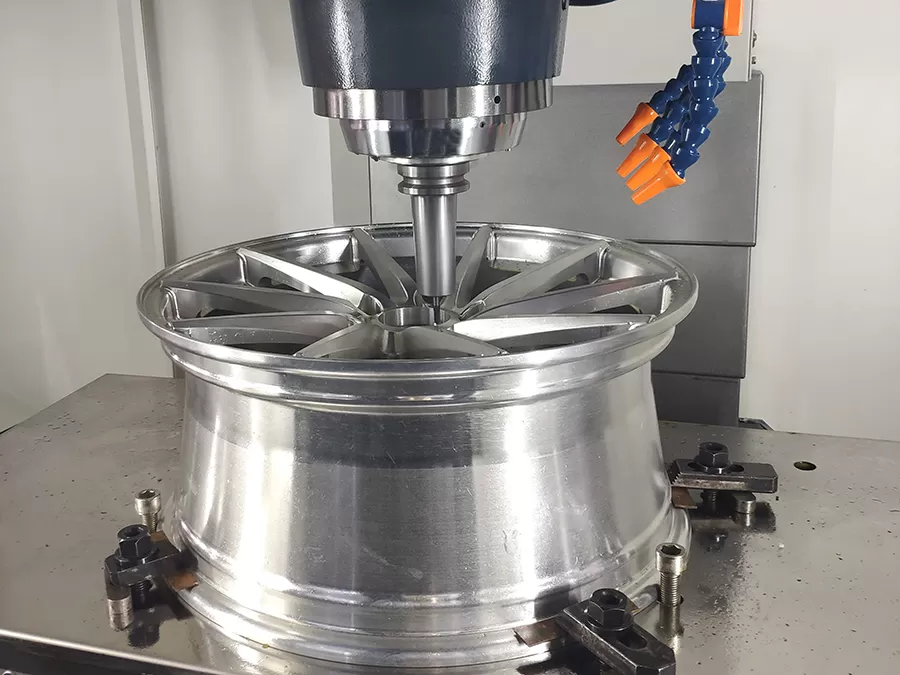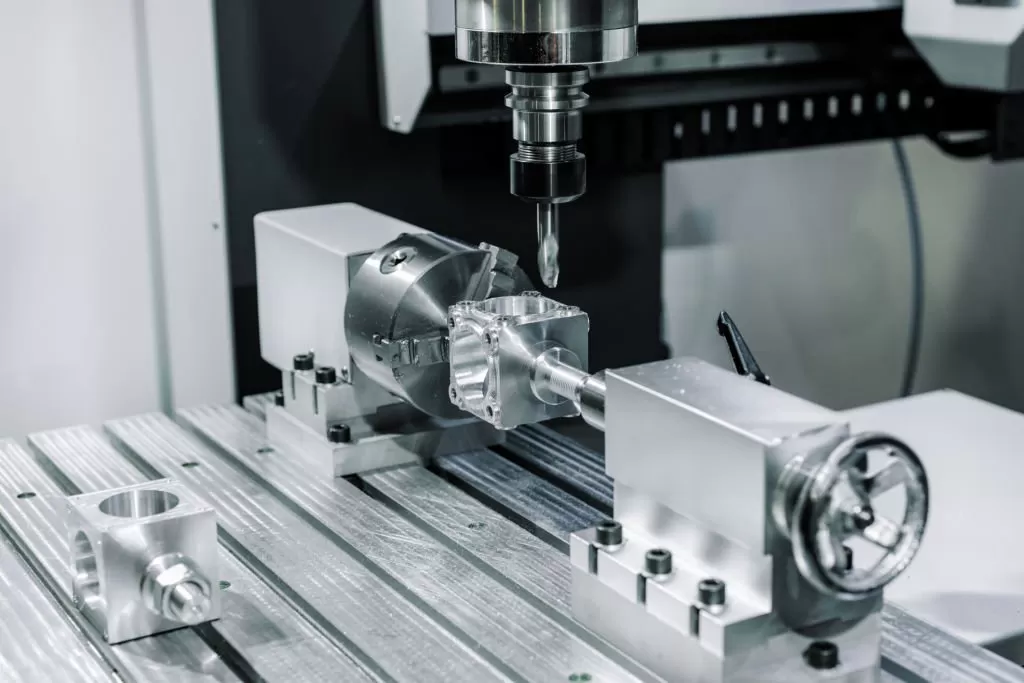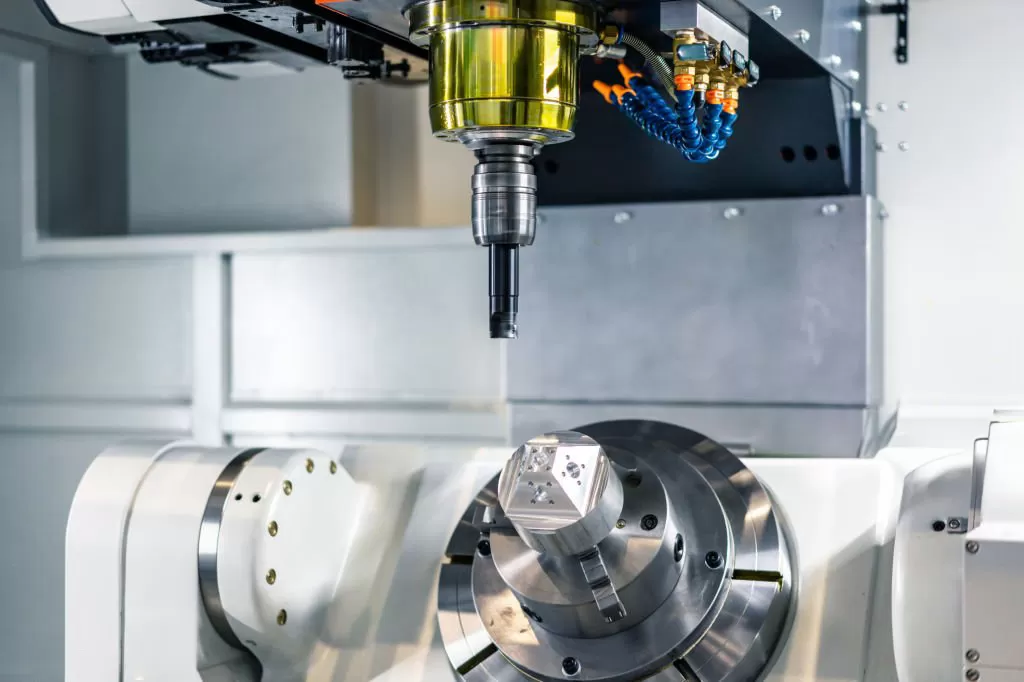Computer Numerical Control (CNC) machines have revolutionized the manufacturing industry, improving product quality, operational efficiency, and reliability. This technology has become immensely popular, and it is expected that by 2028, the global CNC machine market size will reach $140.78 billion, with a compound annual growth rate of 7.1%. Like any other technology, these manufacturing powerhouses can encounter malfunctions and other issues. Without proper knowledge, these relatively minor issues can have far-reaching impacts.
CNC machining is a form of automated manufacturing that uses precise tools (rotating tools on a spindle (CNC mills) or fixed tools against rotating raw materials (CNC lathes)) to create complex parts. The spindle's role is to provide the necessary rotational motion for accurate material removal. Additionally, CNC machining is an omnipresent force within the manufacturing industry, particularly crucial in sectors that rely on metal and plastic production.
These machines utilize carefully crafted algorithms designed by engineers to send precise instructions to the machine tools, orchestrating their movements and managing auxiliary processes. This crucial process empowers precision cnc machining and the skilled machinists who oversee it, allowing them to deliver unparalleled versatility, efficiency, and precision. This capability extends from the manufacture of tiny electronic components to the production of vast aircraft and aerospace parts.

Common problems with CNC machines can have serious consequences. Errors might seem trivial, but if not detected in time, they can cause significant damage to tools and machines. These issues can reduce the lifespan of the machine and affect productivity, leading to replacement costs or significant downtime. Over time, they can lead to complete failures.
Identifying and addressing common machine issues can extend the lifespan of CNC machines. Predictive and proactive maintenance can also reduce downtime, keeping our machining tools in optimal working condition, thereby improving overall efficiency. The most common CNC machine problems include the following seven aspects:
1. Code Errors
Computer-driven machines rely on complex code, and programming is one of the most common mistakes machine operators encounter. These errors can be caused by incorrect variables inputted into the program, wrong settings, or a lack of understanding of different G and M computer codes.
These issues can be difficult to detect, especially if employees lack experience. Many people will immediately look at the machine and overlook that the problem might originate from the computer. Wasted time, materials, and machine damage can result in high costs and slow operations.
2. Lack of Maintenance
CNC machines, such as 5 axis cnc machine, consist of many moving mechanical systems that must work within extremely tight tolerance requirements to ensure product quality. The slightest error, wear, or debris can severely impact machine performance, causing jams or permanent damage. Over time, dirt and debris will accumulate, and small errors will become more significant, eventually leading to machine failure.
Material movement, overheating, and noise during the cutting process are common signs of issues with CNC machines. The most common signs of overdue maintenance include slight machine errors, such as surfaces that do not meet standards or barely meet standards.
3. Vibration or Humming
Vibration during operation can shorten the tool's lifespan, affecting its durability and long-term functionality. Chatter and vibration can impact the machine's work efficiency and cost-effectiveness. If the operator discovers any unusual noise or vibration, they should identify the source of the vibration and take necessary measures to resolve the issue.
However, machine vibration often exists long before it is noticed by the human ear. Modern maintenance practices include regular monitoring of vibration and ultrasonic frequencies to detect minor performance defects.

4. Chuck Clamping Issues
Failure to clamp the workpiece securely on the machine is another common mistake in CNC machining. Incorrect clamping can lead to issues such as deviation, chatter, or deformation, causing damage to the machine or workpiece. If the chuck cannot hold the workpiece securely, a replacement might be necessary. This problem can be more severe than damaging workpieces or tools. Improper clamping of machine parts can cause accidents and injure operators, affecting the entire operation's safety.
5. Incompatible Power Supply
If an operator finds performance issues with the machine, it could be due to a problem with the power supply. The power supply must always provide the correct voltage to the input end. The output end must also work correctly to ensure the machine gets enough power. Machines with insufficient power need to work longer to achieve the same effect, leading to tool failure or workpiece damage. Excessive power can damage the machine, even causing complete failure.
6. Improper Tools or Settings
Incorrect cutting tools can affect the quality of material processing. Pay attention to tool marks on the edges and corners of materials, rough edges, or burn marks. Repeated use of improper tools or settings can cause severe tool wear. Dull tools and incorrect speed ratios can also result in rough material surfaces.
7. Overheating
Overheating is a common issue in large-volume and long-term machining. Spindle overheating is usually caused by an unclean machine and inadequate airflow. Environmental temperature can typically cause overheating, affecting work quality, tools, and the machine. A typical CNC machine should maintain a stable temperature range to prevent adverse effects.

While it can sometimes be challenging to avoid issues when operating complex machinery, supervisors can take specific measures to minimize unnecessary damage and malfunctions. Preventative methods can save time and money, avoiding unnecessary downtime, repairs, and replacements. Taking the following steps can minimize the impact of common errors and maintain the machine's lifespan:
Prioritize Operator Training: Human errors are common in production, whether it's choosing the wrong tool or data entry mistakes. Ensure operators receive extensive training and user manuals, and let experienced operators guide them until they are familiar with the relevant settings and protocols.
Develop a Preventative Maintenance Plan: CNC machines, for example, steel cnc machine, require regular cleaning and maintenance. Develop a detailed maintenance plan and ensure the team records any repairs to keep a comprehensive record of each machine's issues. Operators should routinely inspect the machines, ensure coolant levels are sufficient, and identify signs of wear.
Conduct Vibration Analysis: Vibration analysis allows machine maintenance experts to monitor machine vibration data and detect potential issues. It can detect bearing faults, shaft bending, misalignment, loose components, and more. If an operator is concerned about vibration issues, consult a professional to help identify the root cause.
Monitor the Environment: Environmental factors are an essential part of efficient CNC machine operation. Monitor temperature, humidity, noise, and power fluctuations to ensure the machine has an efficient operating environment.
Calibrate Machines: Regular calibration maintains the machine's accuracy and reliability. Follow the manufacturer's guidelines and have experts regularly inspect the machine, addressing small issues before they become significant problems.
Machine issues and operator errors can lead to significant operational losses. Partnering with experienced, reliable machine experts can minimize these problems through comprehensive after-sales service and trustworthy guidance on proper setup, programming, and maintenance. These professionals can also advise on whether to repair or replace equipment, thereby extending uptime and machine lifespan.
